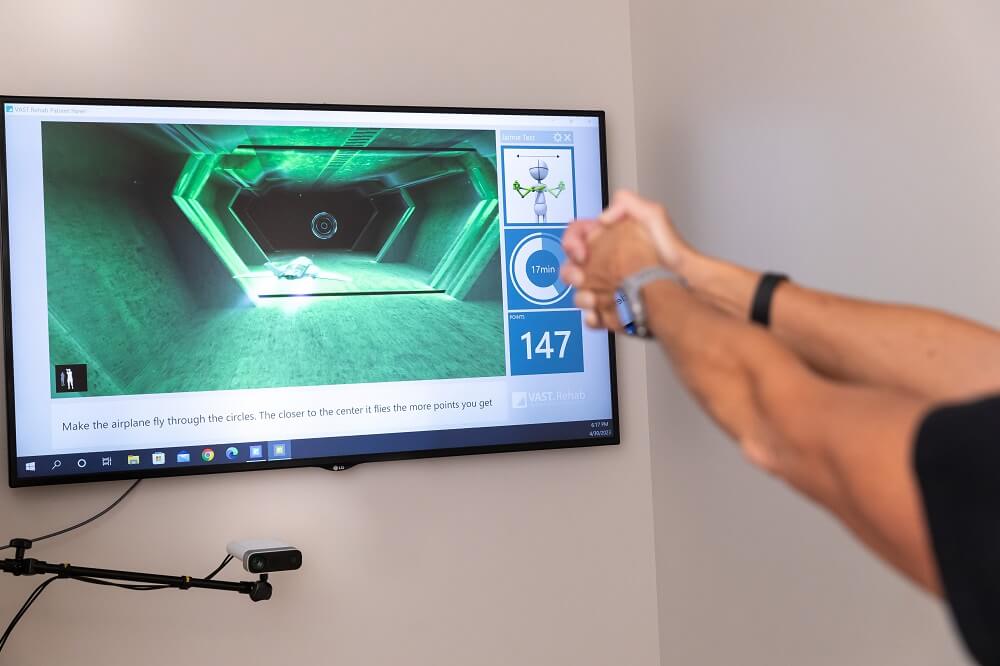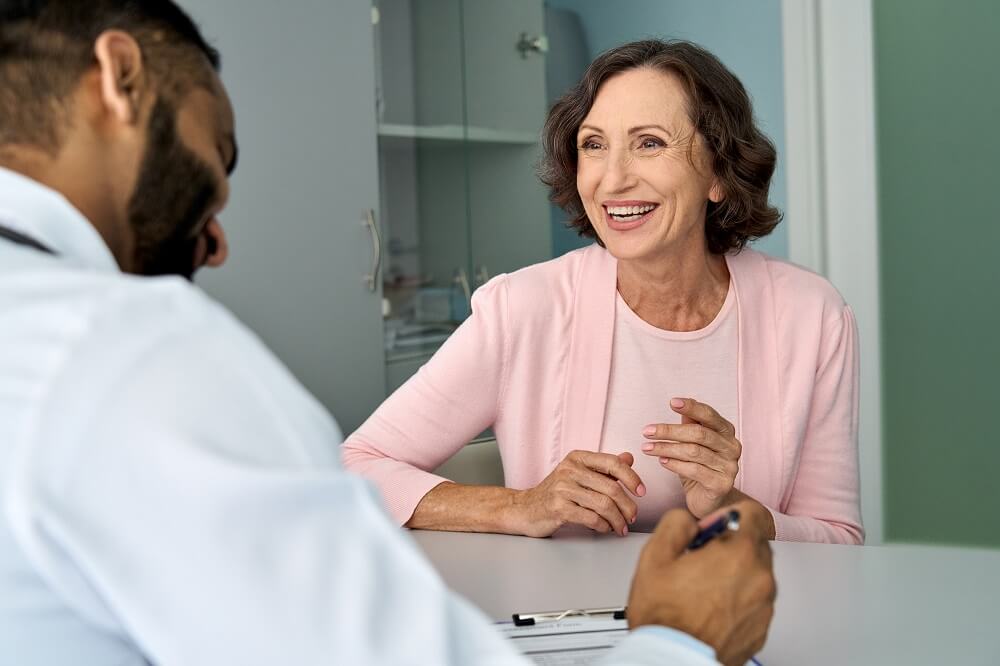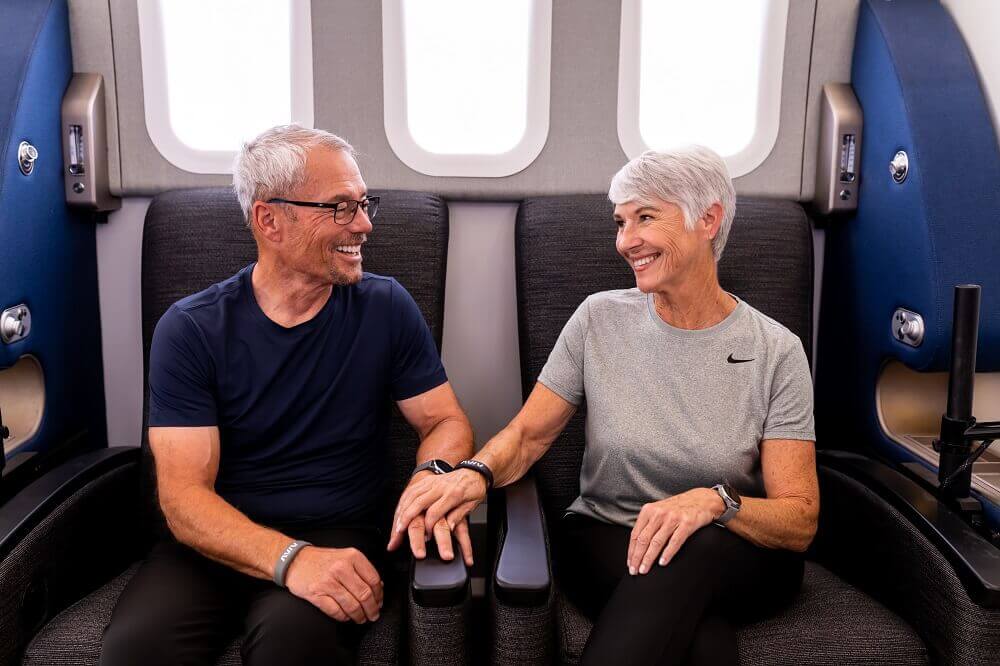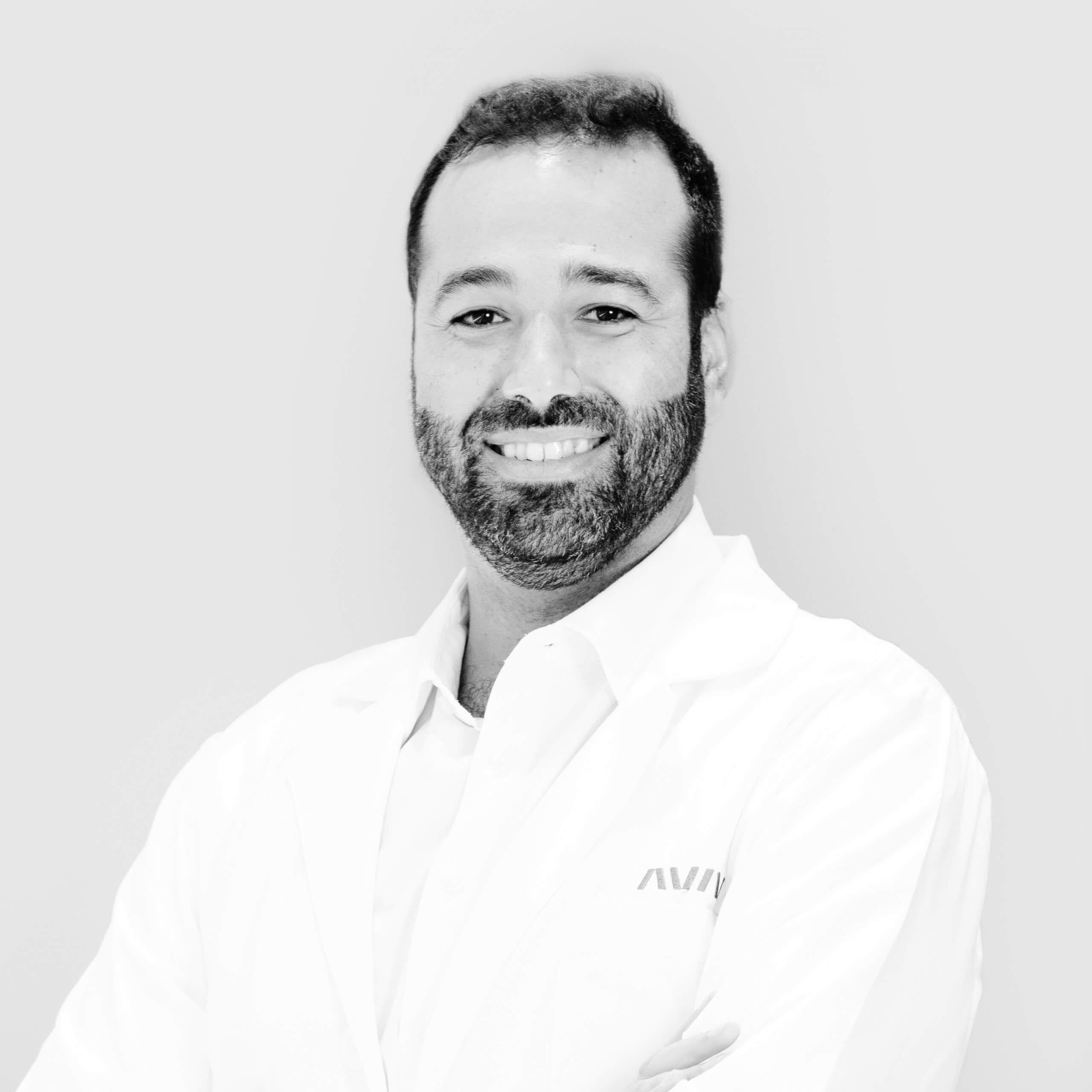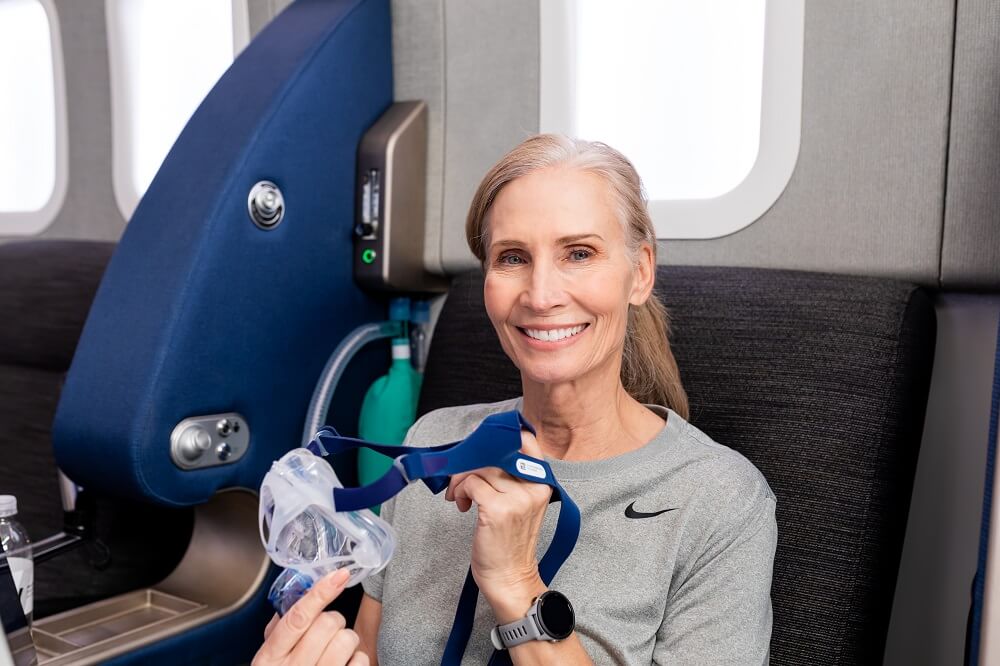
Rebuilding Lives with Stroke Supportive Therapies


The aftermath of a stroke often places a person in a delicate landscape. Not only are you faced with a new normal, but navigating that new normal requires adaptation and resilience—two things that can feel extremely daunting amid the current physical, emotional, and psychological challenges you face.
Taking a multidisciplinary approach to stroke supportive therapies can become your beacon of hope and restoration during this time. Science has unveiled several promising holistic interventions.
In this article, we examine the benefits of a multidisciplinary approach in post-stroke rehabilitation. When over two-thirds of U.S. stroke survivors receive rehabilitation following hospitalization, understanding supportive therapies is essential.
Join us as we navigate post-stroke care, options, and strategies. Rebuilding your life begins here.
Physical Therapy for Stroke Recovery
The Importance of Physical Therapy after a Stroke
The way a stroke impacts the brain can bring on a variety of physical impairments and challenges. By working with a physical therapist (PT), you’ll have a guide who will engage you in various exercises to manage pain, strengthen muscles, and help you move more comfortably.
Stroke physical therapy has been proven to “improve motor function, reduce disability, increase physical activity and fitness levels, and improve quality of life for stroke patients.”
The Goals of Physical Therapy
Physical therapy aims to regain and rediscover your strength one step at a time. It’s a process that takes time, but with persistence and patience, you’ll be able to move more comfortably and confidently through life.
The goals of physical therapy depend on your individual needs. A PT will look at your current limitations and roadblocks to establish a series of beneficial exercises. Common objectives include:
- Restoring mobility and independence
- Preventing further complications
- Improving balance and coordination
- Preventing falls or accidents
- Enhancing motor skills
- Addressing pain
Exercises and Techniques in Physical Therapy
Physical therapy for stroke patients involves:
- Range of Motion Exercises (ROM): Leveraging passive range of motion (PROM) or active range of motion (AROM) exercises
- Strength and Resistance Training: Leading resistance band or dumbbell exercises to increase strength in the muscles
- Balance and Coordination Exercises: Using tools such as balance boards or balance training balls to elevate balance and coordination
- Gait Training: Engaging in walking or treadmill exercises to assess and improve gait patterns and form
- Functional Mobility Exercises: Incorporating everyday activities and learning how to move from one position to another
- Aquatic Therapy: Using buoyancy and resistance to encourage movement while reducing the impact on joints
Cognitive Rehabilitation for Stroke Recovery
Cognitive Challenges Post-Stroke
Cognitive challenges following a stroke can feel discouraging. Because they aren’t obvious to the naked eye, it can be easy for a stroke survivor to feel misunderstood and isolated.
Common cognitive challenges reported by stroke survivors can entail:
- Memory loss
- Attention and concentration issues
- Difficulties understanding speech, speaking, reading, or writing
- Issues with planning, organizing, problem-solving, and making decisions
- Being slower at processing and responding to new information
Cognitive Rehabilitation Strategies
There are specific, research-backed cognitive rehabilitation techniques that can help stroke survivors achieve more clarity in their day-to-day activities.
The brain is a powerful organ that can learn at any age. Medical experts note, “the reality is that everyone has the capacity to develop new cells that can help enhance cognitive functions.” The process of generating new brain cells is called neurogenesis.
Experienced and trusted medical professionals can conduct advanced brain imaging scans to assess the impacted brain areas and determine a suitable cognitive rehab strategy.
Some examples of cognitive rehabilitation strategies include:
- Memory training (e.g., employing memory aids such as acronyms or visualization to enhance recall)
- Attention and concentration training (e.g., focusing on one task at a time to enhance concentration)
- Spatial awareness and perception training: (e.g., practicing scanning and processing visual information)
Premier Cognitive Training Tools
The cognitive training exercises available on BrainHQ—a premier personal cognitive training tool Aviv Clinics uses to exercise our clients’ cognitive abilities—allow our team to create unique and personalized strategies that target various cognitive areas such as:
- Attention: Double Decision encourages users to rely on visual processing. It asks you to stay attuned to details when looking at the area straight ahead (the “useful field of view”). The further you get into the exercise, the more distractions appear to stretch your visual processing ability.
- Brain speed: Sound Sweeps is an auditory exercise where you listen to frequency sweeps—sounds that begin low and rise or vice versa. Frequency plays a role in understanding speech. The sweeps get faster over time, challenging your brain.
- Memory: Mind’s Eye asks you to remember an image. You are then presented with similar images and must determine whether that primary image is in that group. As you progress, images may appear for a shorter time or you might be required to remember more than one image.
- Navigation: Mental Map requires the user to remember the location of objects on a grid. They then ask you to reconstruct the grid from memory. The grids become more complex as you progress through the exercises.

As part of Aviv Clinics’ multidisciplinary stroke recovery treatment, you may also complete our unique cognitive training regime while exerting yourself physically on the cutting-edge h/p/cosmos medical treadmill. Research shows this combination of physical and cognitive effort maximizes the benefits of the Aviv Medical Program, taking your brain and body to the next level.
Occupational Therapy for Stroke Recovery
The Scope of Occupational Therapy
The American Stroke Association notes, “35-40% of stroke survivors have limitations on basic activities of daily living 6 months after their stroke.” Occupational therapy aims to help address these limitations.
This type of therapy focuses on assisting people to confidently participate in everyday life activities. From dressing to bathing to eating, occupational therapy provides the opportunity to regain daily living capabilities lost upon your stroke and develop strategies to adapt to post-stroke deficiencies.
Enhancing Daily Living Skills
Occupational therapists offer lifestyle recommendations for:
- Daily living activities
- Adaptive equipment such as shower chairs
- Caregiver and family training
- Techniques that help with memory, concentration, and executive function
- Fall prevention tactics
Occupational Therapists (OTs) will often assess one’s physical and cognitive limitations to craft a personalized plan for you. Occupational therapy plays an important role in post-stroke care by addressing gaps that may not be covered by physical or cognitive therapy alone.
Speech Therapy for Stroke Recovery
Addressing Communication Challenges with an SLP
Stroke survivors who experience speech challenges can benefit from working with a speech-language pathologist (SLP). Goals may address speech intelligibility, language comprehension, expression, or other communication-related difficulties.
Communication is a broad realm with multiple layers that comprise how we speak and interact with others. There are multiple strategies and forms of speech therapy, such as:
- Language Exercises: For individuals with aphasia, therapy may include improving word retrieval, sentence construction, and overall language comprehension.
- Articulation Exercises: This includes exercises focused on improving speech clarity and intelligibility.
- Augmentative and Alternative Communication (AAC): Individuals with severe communication impairments may be evaluated for AAC devices, such as communication boards or speech-generating devices.
- Cognitive-Communication Therapy: This helps individuals with cognitive-communication deficits to focus on memory, attention, problem-solving, and other cognitive functions related to communication.
Swallowing Rehabilitation
SLPs can also assist those who have dysarthria (difficulty swallowing). They will typically guide individuals on unique muscle-strengthening exercises to help them consume and swallow food and drinks safely.
Specific methods include:
- Techniques to help you use your muscles to chew and swallow
- Instructions on ways you should sit or hold your head when you eat
- Strategies to help you swallow better and more safely
- Eating softer foods or drinking thicker drinks to help make swallowing easier
Hyperbaric Oxygen Therapy (HBOT): A Stroke Supportive Therapy
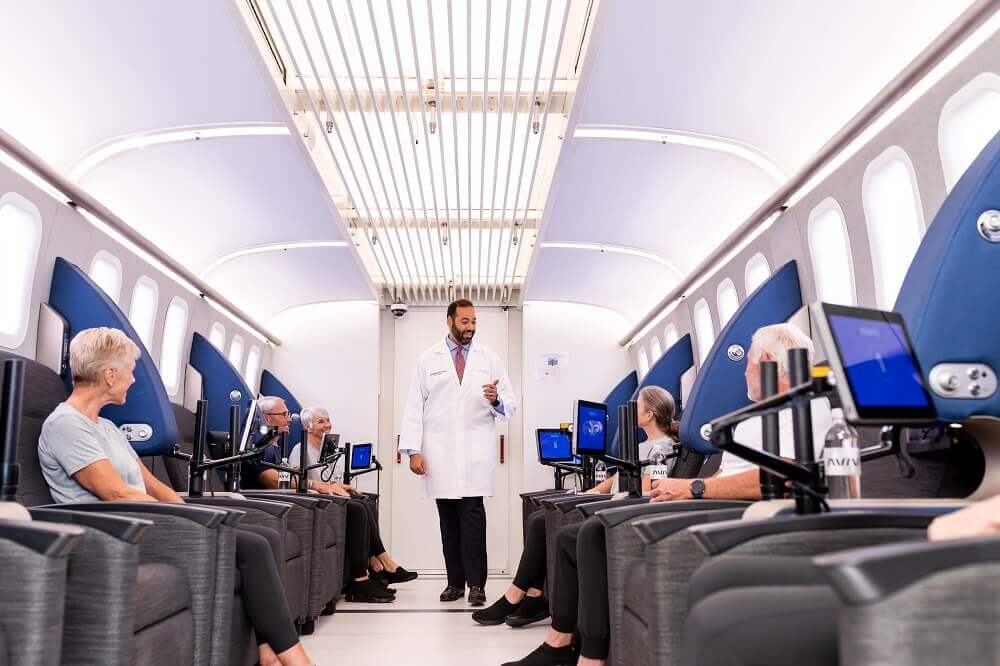
As part of the Aviv Medical Program, HBOT is used as a stroke supportive therapy along with other holistic therapies.
Understanding Hyperbaric Oxygen Therapy (HBOT)
The human body is capable of impressive feats of endurance and resilience. However, it sometimes needs a gentle push to unlock its true capabilities. That push can be hyperbaric oxygen therapy (HBOT).
Hyperbaric oxygen therapy is a type of therapy where individuals breathe 100% pure medical-grade oxygen in a pressurized suite. The unique Aviv Clinics protocol involves the Nobel-prize-backed hypoxic protocol. The process of fluctuating oxygen levels increases oxygen absorption in the body up to 10 times higher than normal and gives the body that gentle push to unlock its potential for self-healing.
The Mechanisms of HBOT in Stroke Recovery
When a stroke happens, some brain tissue dies while other tissues are damaged. Although the dead tissue cannot be resurrected, the surrounding damaged, or “stunned,” tissue can be rehabilitated to aid in restoring lost function. The hypoxic-hyperoxic HBOT protocol, in combination with other therapies available in the Aviv Medical Program, helps the body repair those damaged tissues, improving cognitive and physical functions impacted by the stroke.
Research and Clinical Evidence
Aviv Clinics’ HBOT protocol is evidence-based and backed by more than a decade of scientific research. Our team has played an integral role in clinical studies at The Sagol Center for Hyperbaric Medicine and Research. Here we analyzed the impacts of HBOT on stroke survivors.
Our research reveals this specific hyperbaric oxygen therapy protocol:
- Triggers neuroplasticity—when healthy parts of the brain “rewire” to assist injured parts of the brain.
- Encourages neurogenesis—the creation of new neurons (brain and nerve cells).
- Creates angiogenesis—the growth of new blood vessels for improved blood flow and oxygenation of tissue.
- Increases neurocognitive abilities in post-stroke patients.
This groundbreaking research negates the belief that the brain only has a limited window for improvement. Although some of Dr. Shai Efrati’s HBOT studies were conducted on people who had their stroke within a three-year timeframe, in other clinical trials, “Dr. Efrati has seen similar improvement in patients whose brain injuries occurred up to 20 years before.”
Join our free webinar: Recovery After a Stroke >>
Integration of HBOT with Other Therapies
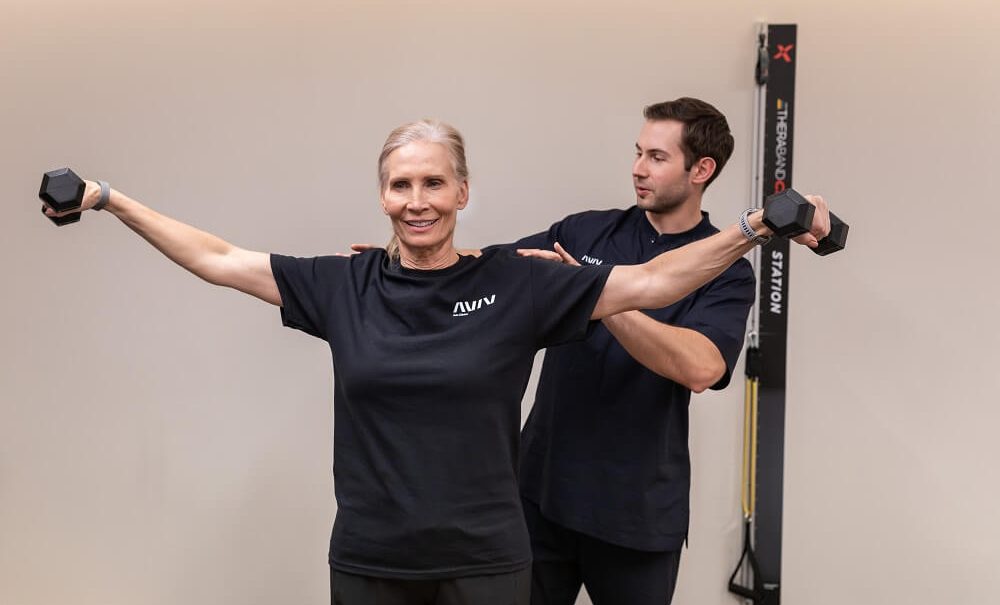
The medical staff at Aviv Clinics integrates its unique HBOT protocol with other evidence-based therapies, including cognitive and physical training, as well as nutritional coaching. Our clinical experience has shown that the Aviv HBOT protocol produces optimal outcomes when paired with other therapies (much of what we’ve discussed earlier).
Having a quality and diverse medical staff specializing in the various types and stages of stroke recovery gives us the upper hand in providing holistic and compassionate care. Every person’s body is unique, and each of our therapy programs reflects that.
Support Groups and Counseling
The Role of Support Groups
Support groups offer emotional and social support during your stroke rehabilitation journey. Interacting with those who are also going through similar experiences fosters community and connection. This can help you feel less alone amid a challenging situation.
Support groups also offer a safe space to express feelings and receive validation and empathy. It’s easy to feel a range of emotions as a stroke survivor. From grief to anxiety to depression, these emotions are valid, and it’s important to acknowledge these feelings in a safe space.
Find a stroke support group in your area.
The Role of Counseling
Counseling offers a great one-on-one opportunity to add further support strategies to your care journey and offers a haven for stroke survivors.
There is no one-size-fits-all approach to managing emotional wounds, but a therapist can help find ways that work for you.
Caregiver Support
Let’s not forget about our caregivers. Support groups and counseling sessions are also available to caregivers of stroke survivors.
Seeing a loved one lose their independence after a stroke is difficult. Though a caregiver may not be able to control the situation, they can control the support they offer. Here is a helpful resource for guidance:
The Aviv Medical Program: Combining Multiple Therapies for Optimal Recovery
Multidisciplinary Approach to Stroke Rehabilitation
Each therapy we discussed above contributes very specific and unique benefits. Every individual requires different needs, and there are different types of strokes, which makes stroke recovery even more multifaceted and complex.
This is why leveraging a multidisciplinary approach to stroke rehabilitation is necessary for long-term, optimal recovery. The Aviv Medical Program offers state-of-the-art, personalized, holistic therapies to maximize your cognitive and physical performance.
Individualized Treatment Plans
Combining the supportive therapies above allows physicians to offer individualized post-stroke recovery plans.
With the Aviv Clinics medical team, you’ll undergo a full-body health assessment conducted by your dedicated physician, neuropsychologist, physiologist, physical therapist, and nutritionist. The assessment may include advanced brain imaging, CPET tests, cognitive tests, and more to gain a full picture of your health and capabilities.
We don’t just see post-stroke survivors. We see individuals with unique stories and potential. This is why we tailor each recovery session to your needs, ensuring you get closer to reclaiming your strength and life.
We are experts in what we do but also understand how our roles depend on one another. Our clinical team thrives on collaboration and stays rooted in data. Our collective expertise, skills, and resources allow us to help our clients achieve their full potential.
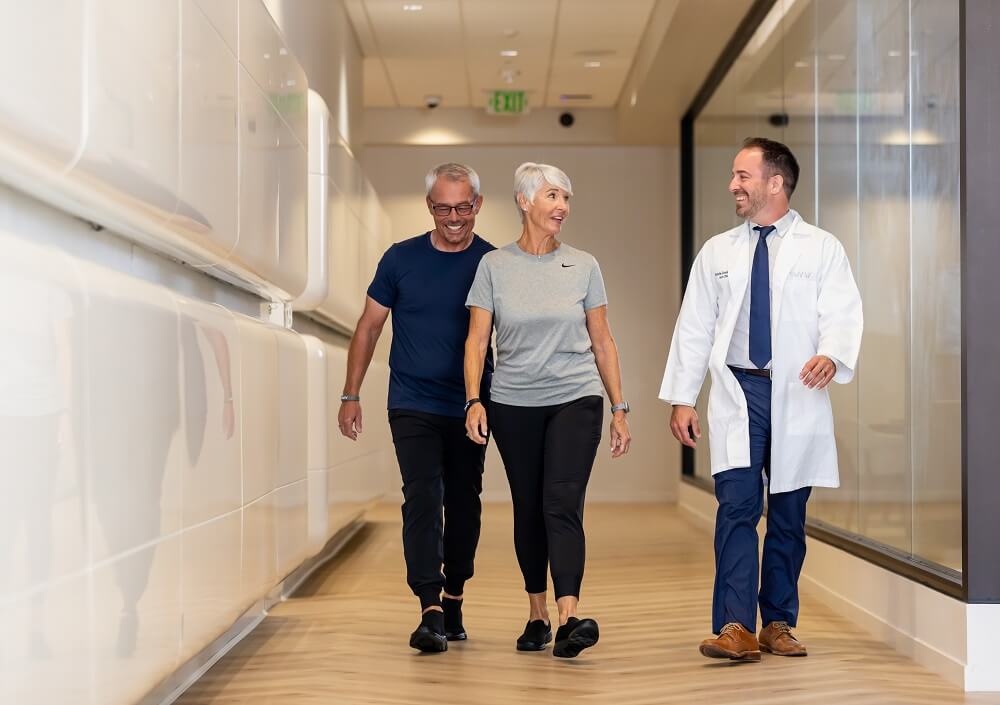
Clients Overcome Adversity with Comprehensive Stroke Rehabilitation
Cindy Parsons
For Cindy, simple activities of daily living, like combing her hair, driving, and walking unassisted, suddenly disappeared after a stroke. She had been told not to expect any more improvement after six months of recovery.
Cindy sought the help of Aviv Clinics, where brain scans indicated that she had brain tissue that could still be revived.
Upon completing her personalized post-stroke program—which included physical, occupational, speech therapy, and HBOT—Cindy can now drive her golf cart, walk without a cane, and talk clearly. She’s even returned to traveling, thanks to her renewed physical independence.
“It didn’t take long at Aviv before I was able to get the courage to try things. And now that fear is 95% gone.”
Neal Christie
Neal was only 10 when he suffered a rare type of stroke. He woke up after a coma, bed-bound for quite some time. After several therapies were unsuccessful in regaining function on the left side of his body, Neal and his mother found the Aviv Medical Program.
Upon completion of his comprehensive therapy program, Neal now enjoys walking and using his arm more fully. He hopes to become a neurosurgeon one day, and thanks to Aviv Clinics, Neal is several steps closer to that dream.
Learn about his journey and what his SPECT scans look like today upon his therapy program with Aviv Clinics.
“It’s all worth it. Like 100 percent.”
The Aviv Medical Program: A Beacon of Hope
The Aviv Medical Program helps post-stroke survivors find hope, resilience, and progress. Leaning into optimism can be challenging during times like this, so the Aviv Clinics team is here to help build trust in your recovery journey with our multidisciplinary program.
We encourage you to learn more about our post-stroke program and contact us.
Aviv Medical Program provides you with a unique opportunity to invest in your health while you age

